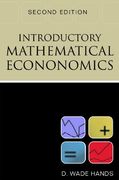Question
Marginal Analysis and Calculus The key to pinpointing the firm's optimal quantity (i.e., the exact output level at which maximum profit is attained) is to
Marginal Analysis and Calculus The key to pinpointing the firm's optimal quantity (i.e., the exact output level at which maximum profit is attained) is to compute marginal profit at any given level of output rather than between two nearby output levels. At a particular output, Q, marginal profit is given by the slope of the tangent line to the profit graph at that output level. Figure 2.6 shows an enlarged profit graph with tangent lines drawn at outputs of 3.1, and 3.3 lots. From viewing the tangents, we draw the following simple conclusions. At 3.1 lots, the tangent is upward sloping. Obviously, marginal profit is positive; that is, raising output by a small amount increases total profit. Conversely, at 3.4 lots, the curve is downward sloping. Here marginal profit is negative, so a small reduction in output (not an increase) would increase total profit. Finally, at 3.3 lots, the tangent is horizontal; that is, the tangent's slope and marginal profit are zero. Maximum profit is attained at precisely this level of output. Indeed, the condition that marginal profit is zero marks this point as the optimal level of output. Remember: If M were positive or negative, total profit could be raised by appropriately increasing or decreasing output. Only when M is exactly zero have all profit-augmenting opportunities been exhausted. In short, when the profit function's slope just becomes zero, we know we are at the precise peak of the profit curve.3 Thus, we have demonstrated a basic optimization rule: 40 Chapter 2 Optimal Decisions Using Marginal Analysis 3 In some cases, the M 0 rule requires modification. For example, suppose demand and cost conditions are such that M 0 for all output quantities up to the firm's current production capacity. Clearly, the rule M 0 does not apply. However, the marginal profit message is clear: The firm should increase output up to capacity, raising profit all the while. (For further discussion, see the appendix to this chapter and Problem 5 at the end of the chapter.) c02OptimalDecisionsUsingMarginalAnalysis.qxd 8/17/11 5:17 PM Page 40 Marginal Analysis 41 Maximum profit is attained at the output level at which marginal profit is zero (M 0). A practical method for calculating marginal profit at any level of output is afforded by the simple rules of differential calculus. (For a thorough review, read the appendix to this chapter.) Consider once again the firm's profit equation: [2.6] Marginal profit (the slope of the corresponding profit graph) is found by taking the derivative of this equation with respect to Q. The result is [2.7] With this formula in hand, we can find the marginal profit at any output level simply by substituting the specified quantity into the equation. For example, M d/dQ 132 40Q. 100 132Q 20Q2 FIGURE 2.6 A Close-Up View of Profit Maximum profit occurs at an output where marginal profit is zero, that is, the slope of the tangent line is zero. 119 118 117 116 Profit (Thousands of Dollars) 3.0 3.1 3.2 3.3 3.4 3.5 Quantity (Lots) c02OptimalDecisionsUsingMarginalAnalysis.qxd 8/17/11 5:17 PM Page 41 the marginal profit at Q 3.0 is $12 thousand per lot.4 In turn, we can immediately determine the firm's profit-maximizing level of output. Using Equation 2.7, we simply set M 0 and solve for Q: Therefore, we find that Q 132/40 3.3 lots. At 3.3 lots per week, the firm's marginal profit is zero. This is the output that maximizes profit. Figure 2.7 graphs the firm's total profit in part (a) as well as the firm's marginal profit in part (b). Note that at the optimal output, Q 3.3 lots, total profit reaches a peak in Figure 2.7a, whereas marginal profit is exactly zero (i.e., the marginal profit graph just cuts the horizontal axis) in Figure 2.7b. A complete solution to the firm's decision problem requires two additional steps. We know the optimal quantity is Q 3.3 lots. What price is required for the firm to sell this quantity? The answer is found by substituting Q 3.3 into Equation 2.2: P 170 (20)(3.3) $104 thousand. What is the firm's final profit from its optimal output and price decision? At this point, we can separately compute total revenue and total cost. Alternatively, we can compute profit directly from Equation 2.5 (with Q 3.3). Either way, we arrive at $117,800. This completes the algebraic solution.
Step by Step Solution
There are 3 Steps involved in it
Step: 1

Get Instant Access to Expert-Tailored Solutions
See step-by-step solutions with expert insights and AI powered tools for academic success
Step: 2

Step: 3

Ace Your Homework with AI
Get the answers you need in no time with our AI-driven, step-by-step assistance
Get Started


